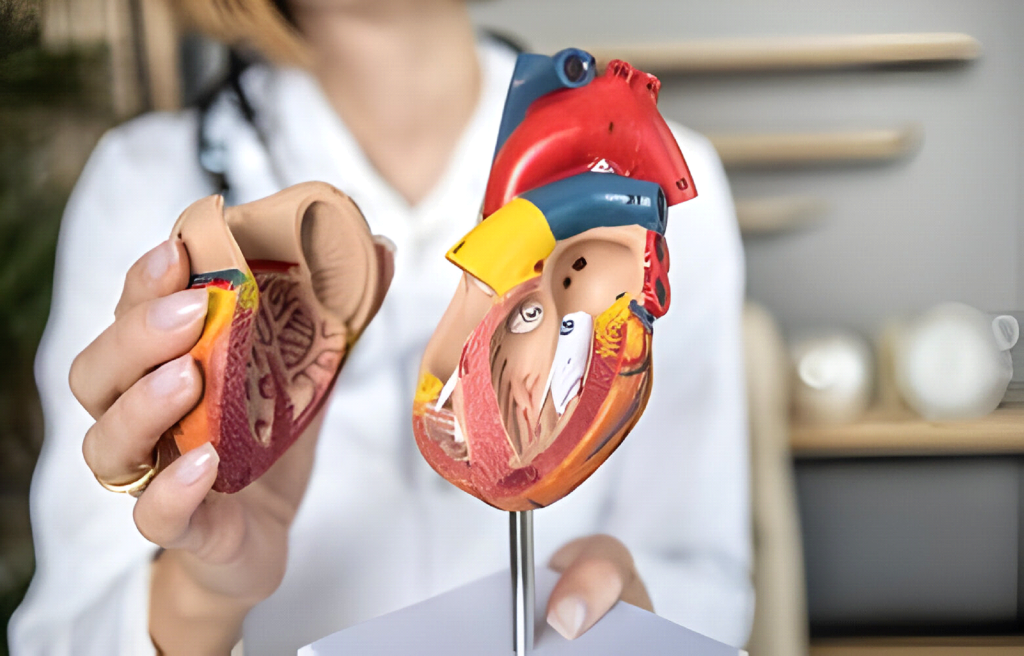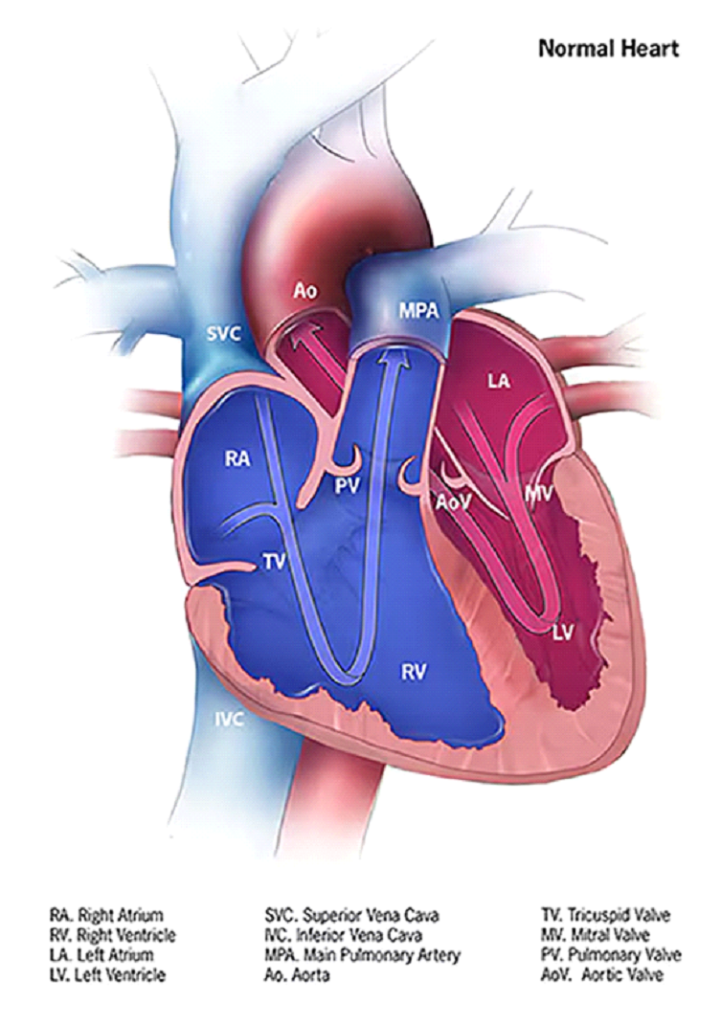


The human heart is a vital organ responsible for pumping blood throughout the body, and it has a complex structure. Here’s a detailed overview of heart anatomy:
1. Chambers: The heart has four chambers
– Right Atrium: Receives deoxygenated blood from the body and pumps it into the right ventricle. – Right Ventricle: Pumps the deoxygenated blood to the lungs for oxygenation via the pulmonary arteries. – Left Atrium: Receives oxygenated blood from the lungs and sends it down to the left ventricle. – Left Ventricle: The strongest chamber, it pumps oxygenated blood to the entire body through the aorta.
2. Valves: The heart
contains four main valves that prevent the backflow of blood and ensure it moves in the right direction: – Tricuspid Valve – Located between the right atrium and right ventricle. – Pulmonary Valve: Between the right ventricle and pulmonary artery. – Mitral Valve: Between the left atrium and left ventricle. – Aortic Valve: Between the left ventricle and the aorta.
3. Vessels
– Aorta: The largest artery in the body, carrying oxygen-rich blood from the left ventricle to the body. – Pulmonary Arteries: Carry deoxygenated blood from the right ventricle to the lungs. – Superior and Inferior Vena Cava: Bring deoxygenated blood from the body back to the right atrium. – Pulmonary Veins: Carry oxygenated blood from the lungs to the left atrium.
4. Electrical System
The heart’s rhythmic contractions are controlled by its electrical system, which includes: -Sinoatrial (SA) Node: The natural pacemaker, located in the right atrium. -Atrioventricular (AV) Node: Located between the atria and ventricles, it helps control the heart rate. -His-Purkinje System: A network of fibers that conduct the electrical impulse from the AV node to the rest of the heart muscle, ensuring efficient contractions.
5. Pericardium
A double-layered membrane surrounding the heart. It provides support and protection while allowing the heart to move smoothly in its environment.
6. Muscle Tissue
The heart muscle, or myocardium, is specially adapted for continuous, rhythmic contractions throughout life. The heart’s anatomy enables it to fulfill its crucial role of maintaining blood circulation, supplying oxygen and nutrients to tissues, and removing carbon dioxide and other wastes.>
